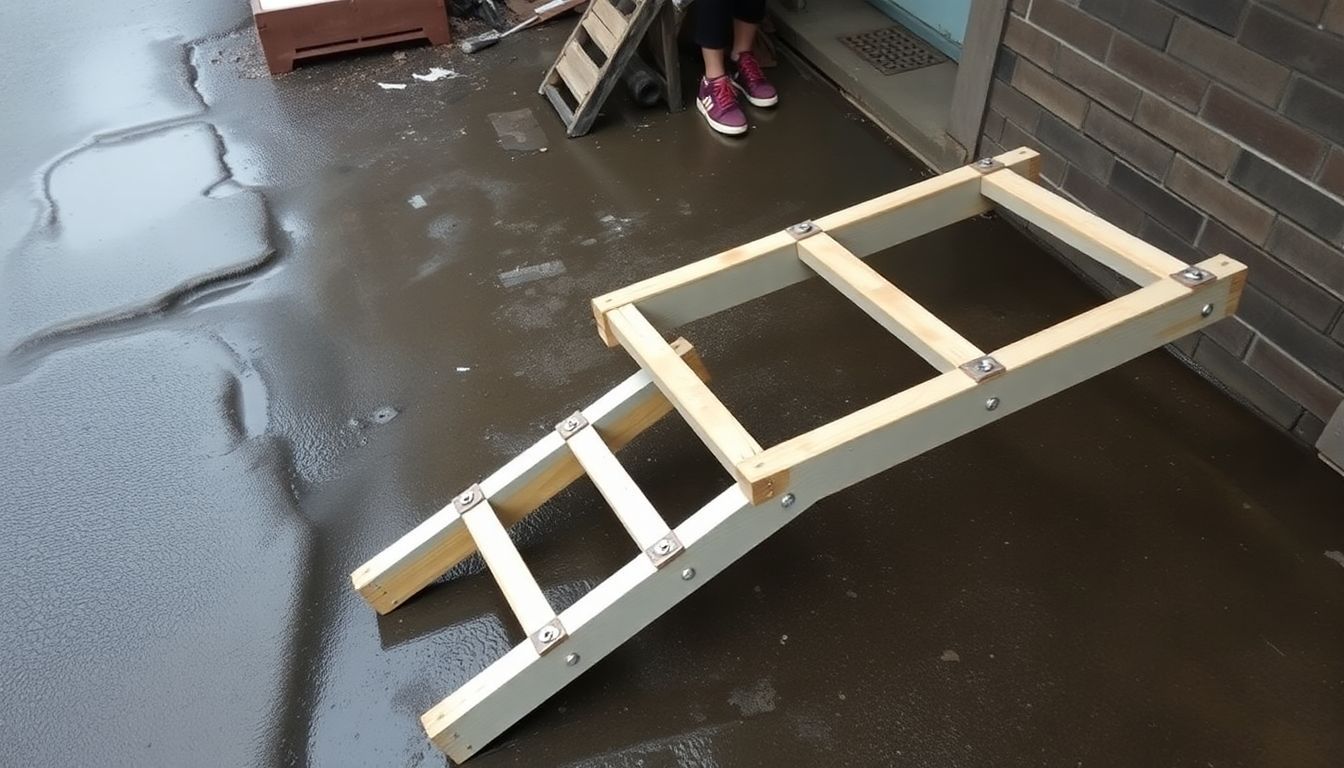Ladder accidents can cause serious injuries and leave workers unsure about their rights. Each year, over 500,000 people in the U.S. are hurt in falls involving ladders. This article will guide you through the steps to file a claim for compensation after a ladder accident.
Learn how to protect your legal rights and get the help you need.
Key Takeaways
- Over 500,000 people in the U.S. are hurt in ladder falls each year, with about 300 deaths occurring annually from these accidents.
- Common causes of ladder accidents include improper setup, faulty equipment, overloading, slippery surfaces, and lack of safety training.
- After a ladder accident, seek immediate medical care, report the incident to your employer, document the scene, and gather witness information to support your claim.
- Workers have two years from the accident date to file a personal injury lawsuit in New Jersey, but workers’ compensation claims may have different deadlines.
- Injured workers can pursue both workers’ compensation and personal injury claims against third parties to maximize potential compensation for ladder accident injuries.
Common Causes of Ladder Accidents

Ladder accidents often stem from improper setup and faulty equipment. Workers may place ladders on uneven ground or at wrong angles, leading to instability. Broken rungs, damaged planks, and loose joints can cause sudden collapses.
Overloading beyond weight limits and slippery surfaces due to wet or icy conditions also increase fall risks.
Safety gear neglect and lack of proper training contribute to many ladder-related injuries. Employers who fail to enforce safety rules or provide adequate protective equipment put workers at risk.
Each year, about 300 deaths occur from ladder falls, highlighting the need for better safety practices.
Safety doesn’t happen by accident. – Unknown
Types of Injuries from Ladder Falls
Moving from the causes of ladder accidents, we now focus on the injuries that can result from falls. Ladder falls often lead to severe injuries that can change lives forever. Head injuries top the list of serious outcomes.
These include traumatic brain injuries (TBIs) that can cause memory loss and long-term disabilities. Concussions are common and can have lasting effects on a person’s cognitive abilities.
Spinal cord injuries are another major concern in ladder falls. These injuries can result in paralysis, nerve damage, and chronic pain. Broken bones, such as fractures in arms, legs, ribs, and pelvis, often require surgery and long periods of healing.
Internal injuries from blunt force trauma can cause internal bleeding and organ damage. Cuts and lacerations may seem less severe, but they carry risks of infection and scarring. Each year, over 164,000 people in the U.S. need medical care for ladder-related injuries.
As a safety inspector, I’ve seen firsthand how these injuries can impact workers and their families, making prevention and proper safety measures crucial in any workplace using ladders.
Steps to Take After a Ladder Accident
Ladder accidents can lead to serious injuries and financial losses. Taking the right steps after a fall is crucial for your health and potential compensation claim.
- Get medical help right away. Your health comes first, and prompt treatment can prevent further harm.
- Tell your boss or supervisor about the accident. This creates an official record of the incident.
- Take photos of the accident scene. Capture images of the ladder, surrounding area, and any hazards.
- Gather witness information. Ask coworkers or bystanders for their names and contact details.
- Write down what happened. Note the time, date, and details of the accident while they’re fresh in your mind.
- Keep all medical records. Save bills, doctor’s notes, and treatment plans as proof of your injuries.
- Contact a construction accident lawyer. They can guide you through the legal process and protect your rights.
- File a workers’ compensation claim. This can help cover medical costs and lost wages.
- Collect evidence of any equipment failure. If the ladder was faulty, keep it as proof.
- Document time off work. Track days missed and income lost due to your injury.
Reporting and Documenting the Accident
Reporting and documenting a ladder accident is crucial for filing a successful compensation claim. Proper documentation helps establish the facts of the incident and supports your case.
- Notify your employer immediately after the accident. This step is essential to qualify for workers’ compensation benefits.
- Fill out an incident report form. Include details such as date, time, location, and how the accident occurred.
- Take photos of the accident scene. Capture images of the ladder, surrounding area, and any visible injuries.
- Collect witness statements. Ask coworkers or bystanders to provide written accounts of what they saw.
- Seek medical attention promptly. Keep all records of your injuries, treatments, and doctor’s visits.
- Document your injuries with photos. Take pictures of visible injuries as they heal over time.
- Save all medical bills and receipts. These documents will help calculate your compensation claim.
- Keep a journal of your recovery process. Note pain levels, limitations, and how the injury affects your daily life.
- Gather relevant work records. Collect information on your work hours, wages, and job duties.
- Maintain a file of all accident-related communications. Save emails, letters, and notes from phone calls with your employer or insurance company.
- Request a copy of your employer’s safety protocols. This information may help prove negligence if safety rules were not followed.
- Obtain ladder maintenance records if possible. These documents can show if the equipment was properly maintained.
- Record any lost wages due to the accident. Keep track of missed work days and income losses.
Medical Attention and Evidence Collection
After reporting the accident, seeking medical care and gathering evidence are crucial steps. These actions protect your health and strengthen your claim for compensation.
- Get immediate medical help: Visit a doctor or emergency room right away, even if injuries seem minor. Quick treatment prevents worsening of injuries and creates a medical record.
- Keep all medical records: Save discharge papers, prescriptions, and bills. These documents prove injury severity and related costs.
- Take photos of injuries: Visual proof helps show the extent of harm suffered in the accident.
- Document the accident scene: Take pictures of the ladder, floor, and surroundings. This evidence can reveal safety issues or hazards.
- Collect witness information: Get names and contact details of people who saw the accident. Their statements can support your claim.
- Write down accident details: Note the date, time, location, and how the fall happened. Include any safety gear used or missing.
- Report to your supervisor: Inform your boss about the accident and injuries. Ask for a copy of the incident report.
- Save work clothes and shoes: Keep items worn during the accident as potential evidence.
- Track missed work days: Note time off due to injuries. This info helps calculate lost wages for your claim.
- Follow doctor’s orders: Stick to all treatment plans. This shows you’re serious about recovery and strengthens your case.
Filing a Workers’ Compensation Claim
Filing a workers’ compensation claim is a crucial step after a ladder accident at work. This process helps injured workers get medical care and lost wages covered by their employer’s insurance.
- Report the accident to your employer right away. Most states require you to notify your employer within 30 days of the injury.
- Get medical treatment promptly. Your employer may have a list of approved doctors for work-related injuries.
- Fill out the official workers’ compensation claim form. Your employer should provide this form after you report the accident.
- Submit the completed form to your employer. Keep a copy for your records.
- Wait for the insurance company’s decision. They will review your claim and decide whether to approve or deny it.
- Attend all medical appointments. Follow your doctor’s orders to support your claim and recovery.
- Keep track of all expenses related to your injury. This includes medical bills, travel costs for appointments, and lost wages.
- Stay in touch with your employer. Update them on your recovery progress and work status.
- Appeal if your claim is denied. You have the right to challenge the decision through your state’s workers’ compensation board.
- Consider hiring a lawyer if you face problems with your claim. An attorney can help protect your rights and maximize your benefits.
Supplementary points on Ladder Accident Claims
Ladder accident claims involve complex legal issues. You need to know about workers’ comp, personal injury claims, and proving employer fault.
Workers’ Compensation vs. Personal Injury Claim
Workers’ compensation and personal injury claims offer different avenues for ladder accident victims seeking compensation. Understanding these options helps injured workers make informed decisions about their legal rights.
| Workers’ Compensation | Personal Injury Claim |
|---|---|
| No-fault system | Requires proof of negligence |
| Covers medical expenses and partial lost wages | Provides compensation for economic and non-economic damages |
| Does not include pain and suffering compensation | Includes compensation for pain and suffering |
| Limited to claims against employer | Allows claims against third parties (e.g., equipment manufacturers) |
| Faster process for receiving benefits | May take longer but can result in higher compensation |
| Does not require proving fault | Requires establishing liability of the responsible party |
Injured workers can file both workers’ compensation claims and personal injury claims against third parties. This approach maximizes potential compensation for ladder accident victims. Consulting with a construction accident lawyer helps determine the best legal strategy for each case.
Proving Employer Negligence
Moving from workers’ compensation to personal injury claims, we now focus on proving employer negligence. This step is key in ladder accident cases. Employers must provide safe work conditions and proper equipment.
Failing to do so can lead to liability for worker injuries.
To prove negligence, victims need strong evidence. This includes photos of the accident scene, witness statements, and medical records. A construction accident lawyer can help gather this proof.
They can also show how the employer failed to meet safety standards. In New Jersey, victims have two years from the accident date to file a claim. Quick action is vital to protect your rights and seek fair compensation.
Statute of Limitations
The statute of limitations sets a strict time limit for filing a ladder accident claim. In New Jersey, injured workers have two years from the accident date to start a personal injury lawsuit.
This deadline is crucial, as missing it can result in losing the right to seek compensation. Workers’ compensation claims often have different deadlines than personal injury cases.
Quick action is key after a ladder accident. Prompt documentation of the incident and injuries helps meet legal filing deadlines and strengthens the claim.
Role of a Construction Accident Lawyer
Construction accident lawyers play a vital role in helping injured workers get fair compensation. These legal experts investigate accidents to gather proof of safety violations or negligence.
They also handle talks with insurance companies to secure proper payment for their clients. Lawyers make sure all legal deadlines are met and represent clients in court if needed.
DiTomaso Law offers legal help for construction accident claims in New Jersey. Their team knows how to build strong cases and fight for workers’ rights. Injured workers can reach out to DiTomaso Law at 856-414-0010 or through their online form to get expert guidance on their claims.
Seeking Compensation from Third Parties
Injured workers in Florida can seek compensation from third parties in addition to workers’ compensation benefits. This option allows victims to recover damages not covered by workers’ comp, such as pain and suffering.
To pursue a third-party claim, workers must prove the party’s duty of care, breach of that duty, and how it caused their injuries. For example, if faulty equipment led to an accident, the manufacturer could be held liable.
Florida law sets a two-year time limit for filing personal injury claims after March 24, 2023. It’s crucial to act quickly and gather evidence to support your case.
My experience handling these claims has shown that strict liability cases against product manufacturers can be particularly effective. However, Florida’s contributory fault laws may reduce compensation based on the worker’s own negligence.
For instance, if a worker was 20% at fault, their award would be reduced by that amount. Thorough documentation of the accident, injuries, and medical treatment is key to maximizing potential compensation from third parties.
Compensation You May Be Entitled To
After exploring third-party claims, let’s focus on the types of compensation you might receive. Ladder accident victims often face steep medical bills and lost wages. Workers’ comp covers these costs, plus disability payments and job retraining.
If you file a personal injury claim, you could get more money. This includes pay for current and future medical care, lost income, and reduced earning power. You may also receive funds for pain, suffering, and rehab costs.
I once helped a client get full coverage for his medical bills and six months of lost wages after a severe ladder fall. His case shows how vital it is to seek all forms of compensation after such accidents.
How to Prevent Future Ladder Accidents
Ladder accidents can lead to serious injuries, but many are preventable. Implementing proper safety measures and training can significantly reduce the risk of ladder-related incidents in the workplace.
- Conduct regular ladder inspections: Check ladders before each use for damage, loose parts, or wear. Tag any faulty ladders as “Do not use” and remove them from service.
- Follow the four-to-one rule: Place ladders at a safe angle by positioning the base one foot away from the wall for every four feet of height.
- Maintain three-point contact: Always keep two hands and one foot, or two feet and one hand, in contact with the ladder while climbing or working.
- Provide comprehensive safety training: Offer employees thorough ladder safety education, including proper usage techniques and hazard identification.
- Use appropriate ladder types: Select the right ladder for each task, considering factors like height, weight capacity, and material compatibility.
- Ensure proper footing: Place ladders on stable, level surfaces and use ladder levelers or stabilizers when necessary.
- Avoid overreaching: Keep your body centered between the side rails and climb down to reposition the ladder instead of stretching too far.
- Implement a fall protection program: Use personal fall arrest systems for work at heights exceeding regulatory limits.
- Establish clear safety protocols: Create and enforce guidelines for ladder use, including weight limits and proper storage procedures.
- Encourage hazard reporting: Foster a culture where employees feel comfortable reporting unsafe conditions or near-miss incidents.
- Use ladder alternatives: Consider safer options like scaffolding or aerial lifts for certain tasks when appropriate.
- Conduct regular safety audits: Perform periodic workplace inspections to identify potential ladder hazards and address them promptly.
Conclusion
Ladder accidents can lead to serious injuries and hefty medical bills. Filing a claim for compensation helps victims recover lost wages and pay for treatment. Knowing your rights and the steps to take after an accident is vital.
Seek legal help to navigate the complex process and get the full benefits you deserve. Stay safe on ladders and know how to protect yourself if an accident happens.
For more insights on your legal rights following accidents at work, particularly in unique environments like movie sets, explore our guide on movie set accident legal rights for crew members.
FAQs
1. What steps should I take after a ladder accident injury?
Seek medical care right away. Document the accident scene and your injuries. Gather witness statements and contact details. Report the incident to your employer or property owner. Keep all medical records and bills. These actions will support your compensation claim.
2. How long do I have to file a ladder accident injury claim?
Time limits vary by state and case type. Generally, you have one to three years to file. Act fast to preserve evidence and meet legal deadlines. Consult a lawyer promptly to understand your specific time frame and protect your rights.
3. What types of compensation can I claim for a ladder accident injury?
You may claim medical expenses, lost wages, and pain and suffering. Future medical costs and reduced earning capacity are also possible. Property damage and out-of-pocket expenses related to your injury can be included. A skilled attorney can help maximize your compensation.
4. How can I prove negligence in a ladder accident injury case?
Show that someone failed to maintain a safe environment or provide proper equipment. Prove they knew or should have known about the danger. Demonstrate their negligence directly caused your injury. Gather evidence like photos, maintenance records, and expert testimony to build a strong case.
References
- https://www.dolmanlaw.com/blog/workers-compensation-ladder-accident-injuries/ (2023-10-30)
- https://www.cdc.gov/niosh/falls/ladder/index.html (2024-01-23)
- https://www.ditomasolaw.com/blog/filing-a-compensation-claim-after-a-fall-from-ladders-or-scaffolding-on-a-construction-site-what-injured-workers-need-to-know/
- https://www.sigallaw.com/blog/how-to-document-your-injuries-for-a-car-accident-claim/
- https://fkfirm.com/article/falling-from-ladder-work/ (2023-02-13)
- https://coppolalegal.com/2022/11/lawsuit-falling-from-ladder/ (2022-11-18)
- https://stanleylawoffices.com/personal-injury-vs-workers-comp/
- https://www.hallandalelaw.com/defective-ladder-injury-claims-what-you-need-to-know/
- https://www.kdslawfirm.com/blog/2024/august/why-you-need-to-hire-an-nyc-ladder-accident-lawyer-for-your-claim/
- https://usalaw.com/personal-injury-resources/suing-a-third-party-for-a-workplace-accident-what-kinds-of-third-parties-may-be-involved/
- https://www.tasbrmf.org/resources/insights/prevent-ladder-falls

